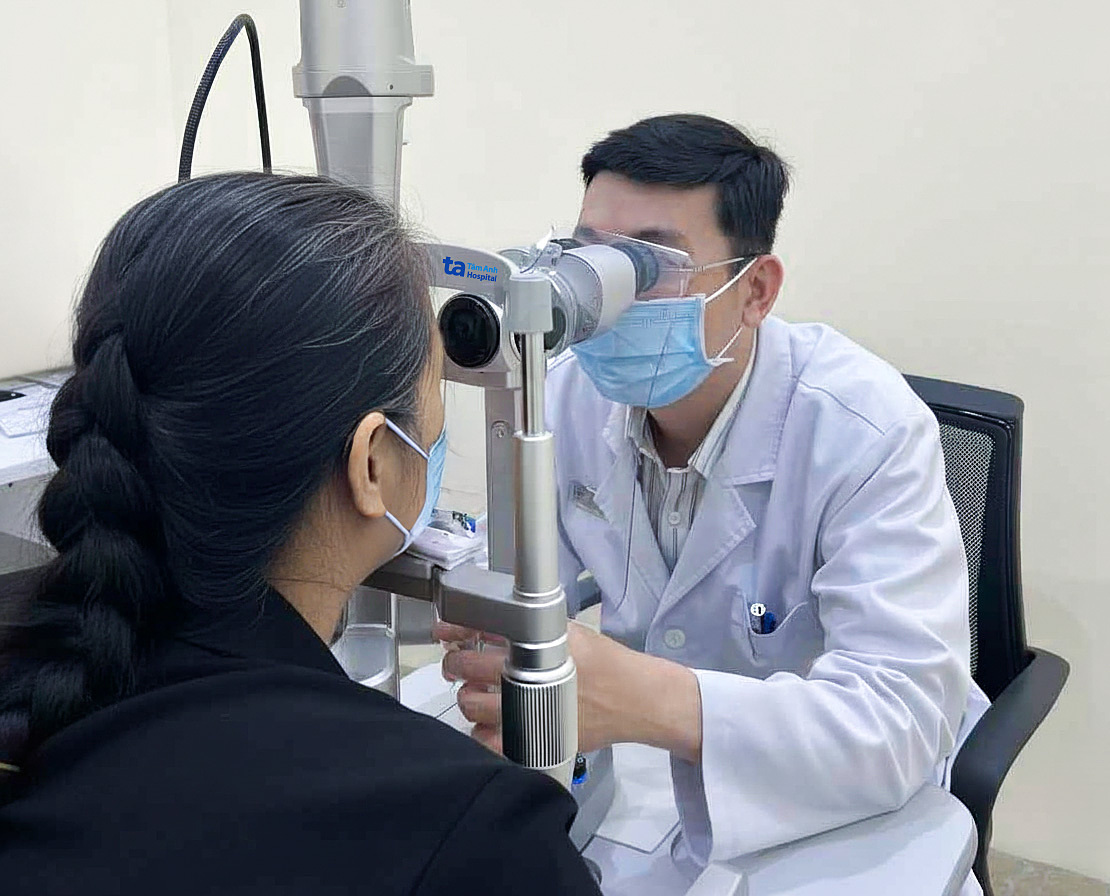Thuy, 55, was diagnosed with proliferative diabetic retinopathy at Tam Anh General Hospital in Ho Chi Minh City. Tests revealed protein in her urine, peripheral nerve damage, and vitreous hemorrhage (bleeding into the vitreous humor of the eye), which caused near-total vision loss. Doctor Vo Tran Nguyen Duy of the Endocrinology - Diabetes Department said she needed immediate treatment to avoid permanent blindness and prevent the proteinuria from progressing to kidney failure.
Along with blood sugar management and medication for proteinuria, Thuy received intravitreal injections and surgery to remove the hemorrhaged vitreous and scar tissue. After several months, her blood sugar stabilized, the proteinuria did not worsen, and her vision recovered to 8/10. She is now able to wear glasses for reading.
A year prior, Thuy had consulted an ophthalmologist in Russia and took prescribed medication, but her condition did not improve. The dark spots in her eyes worsened. When her vision severely deteriorated, she could not see clearly or walk unaided. Believing her condition was incurable, she returned to Vietnam to be closer to her family.
 |
Doctor Duy checks Thuy's condition. Photo: Tam Anh General Hospital |
According to the American Academy of Ophthalmology, diabetic retinopathy affects about 93 million people globally. Of those, about 25-30% are expected to develop vision-threatening diabetic macular edema, and 5% will experience proliferative diabetic retinopathy leading to vitreous hemorrhage requiring surgery.
Doctor Duy explained that proliferative diabetic retinopathy is a serious, though less common, complication of diabetes. It is characterized by the abnormal growth of new blood vessels on the retinal surface and in the vitreous humor. These fragile vessels can easily rupture, causing bleeding, scar tissue formation, and potentially retinal detachment and blindness if left untreated.
Diabetic retinopathy often presents no early symptoms. More serious symptoms, such as blurred vision, vitreous hemorrhage, retinal detachment, seeing spots or strands, difficulty seeing at night, narrowed vision, and even blindness, appear only as the disease progresses.
 |
Thuy has her vision checked after treatment. Photo: Tam Anh General Hospital |
Treatment depends on the patient's eye health. Doctor Duy recommends that people with diabetes manage their blood sugar and blood pressure to prevent vision loss, take prescribed diabetes medication, and attend regular checkups. A healthy diet and exercise are crucial for maintaining safe blood pressure and cholesterol levels.
He advises that type 1 diabetics have their first eye exam within five years of diagnosis and follow up annually, or at least every two years if there are no abnormalities. Type 2 diabetics should have an eye exam immediately upon diagnosis. If retinal damage is present, the frequency of exams may increase depending on the severity and other risk factors. Regular eye exams facilitate early detection and timely treatment of abnormalities, preventing blindness.
Bach Duong
| Readers can submit questions about diabetes here for doctors to answer. |












